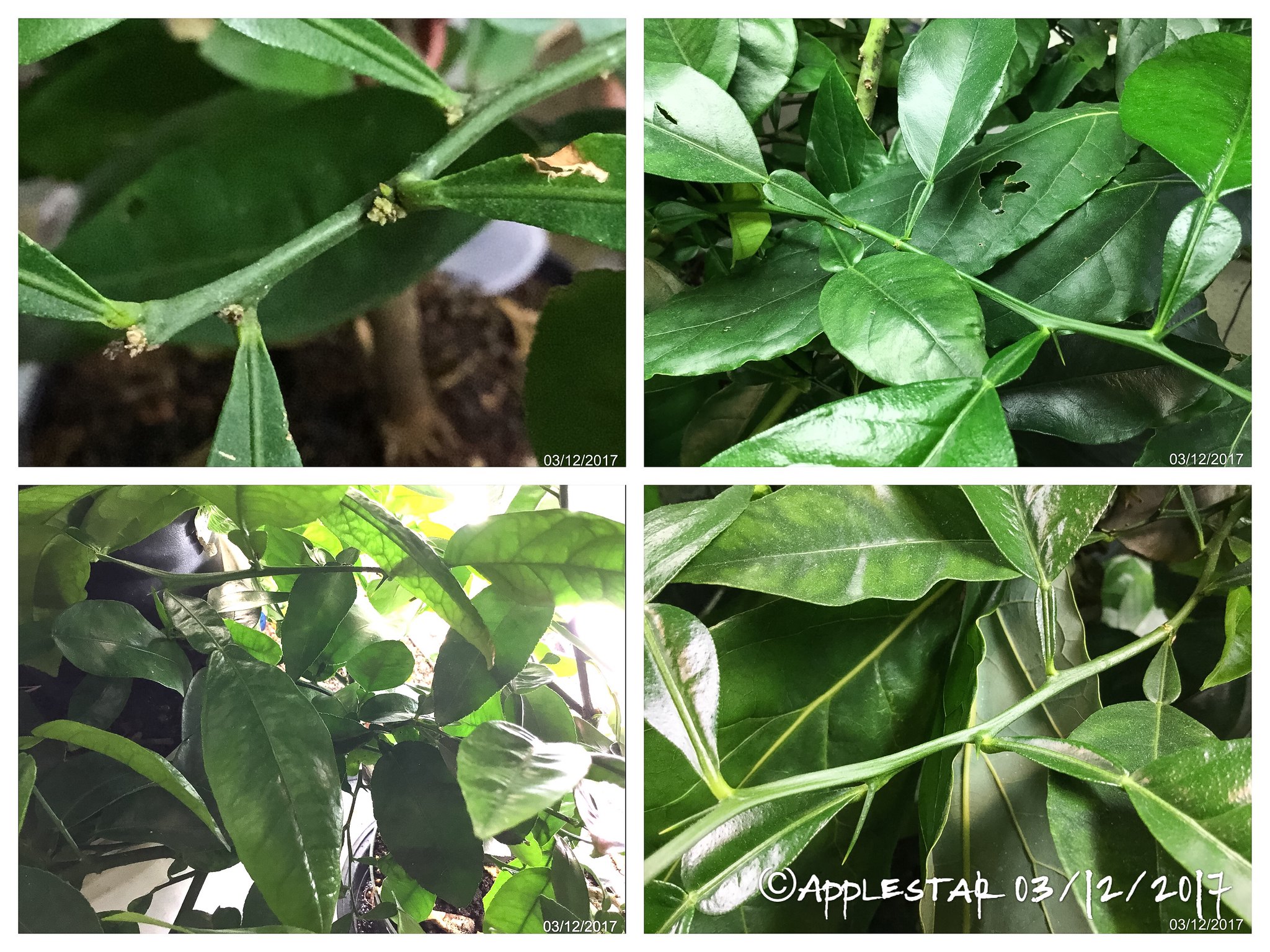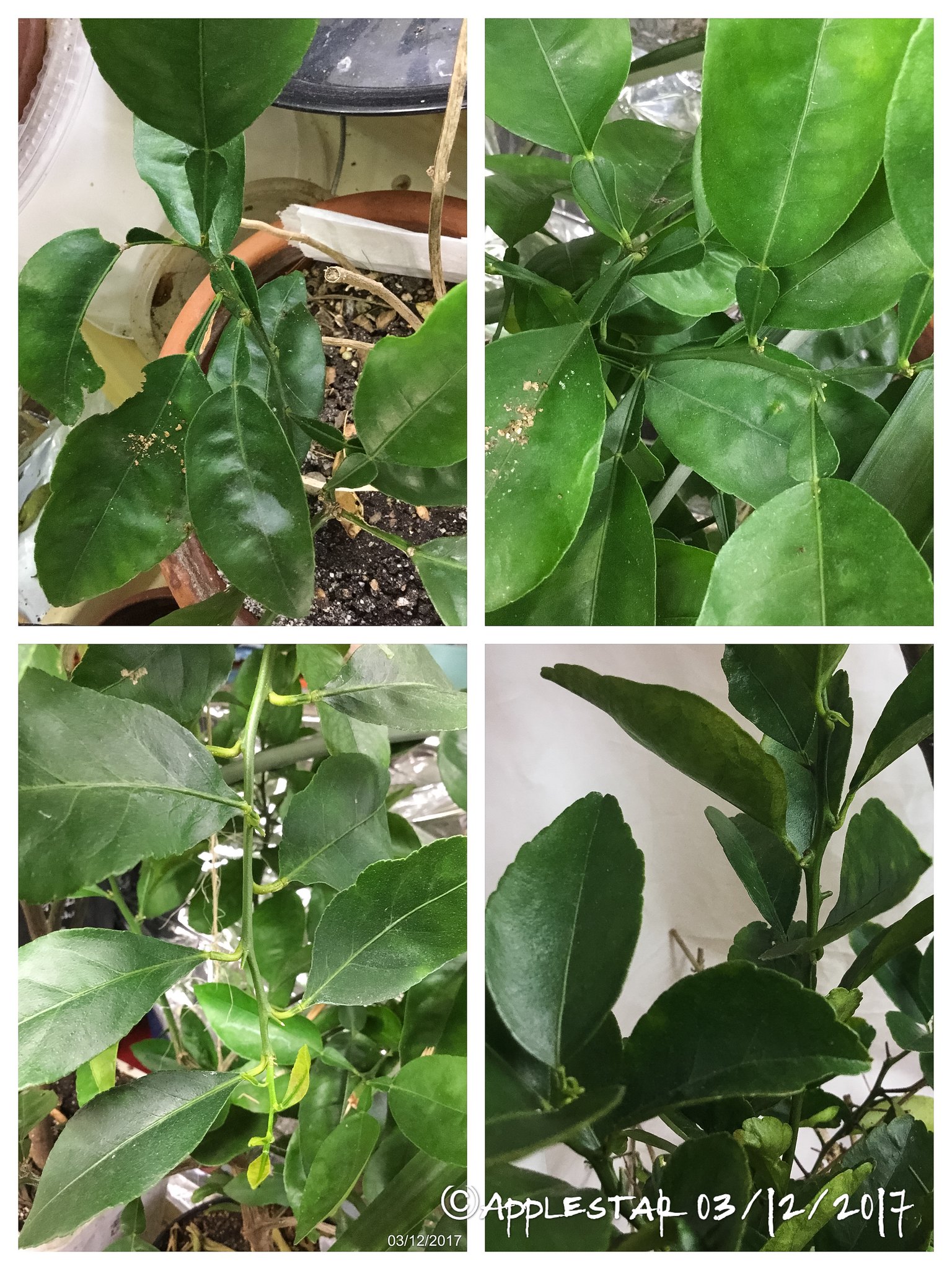Hi,
I am a new gardener in the making (or attempting to at least) and need some advice.
I need some help with my potted dwarf clementine tree. I bought the tree last spring and have had it potted since then. It did really well over the past year with lots of new growth. When temperatures started dropping at the start of winter, I brought the tree indoors and placed it by a window where it could get sunlight. While I had the tree indoors, there was a lot of leaf and flower drop. I managed to keep it alive during this time and brought it outside at the start of March, when temperatures in SC had warmed above 40 F.
At first the tree lost some additional leaves but then I saw a lot of new growth starting to sprout! However, it looks like things have gone wrong again. There are several branches that have started to turn brown at the tips and over the last few days it has spread down the branch. I have included some pictures for reference. What could be causing the branches to turn brown? I am planning on pruning these brown parts off, but I am concerned that this doesn't solve the underlying issues. Could this be a fungus? Should I apply an antifungal spray? Should I repot? As you can see, I am very lost about what I should do at this point to help my little tree survive...
- applestar
- Mod
- Posts: 30545
- Joined: Thu May 01, 2008 7:21 pm
- Location: Zone 6, NJ (3/M)4/E ~ 10/M(11/B)
I think what you have are some kind of sucking pest infestation. Possibly mites, scale insects is also likely. I can't see scales but you may if you look closely, maybe with magnifying glass or use your cell phone or digital camera to take clear, focused closeup photos and and zoom in close -- you can see better if you upload the photo to your computer.
I just went around taking some sample photos of my citruses.

Top left one has the bumpy, browned leafnode buds similar to what yours are showing. I'm pretty sure these on mine are due to mite infestation, though heavy scale infestation can cause this as well.
Mites are microscopic but I had this problem last winter with peppers, tomatoes, as well as citrus, and symptoms on peppers and tomatoes were clearly ID'd as mite -- possibly broadmite or cyclamen mite as well as tomato russet mite -- infestations. I also had some that were definitely infested by scale insects, and those lost their leaves like yours.
The plant on the bottom left have been visited by ants and possibly have -for the moment- light scale infestation. I added it as a comparison, but most of the foliage look healthy (actually examine at the leaf nodes and stems and underside of the leaf veins when looking for scales) -- I might be seeing some damaged leaf nodes in this photo. I already put down ant bait near the plant last week, but I saw a few more hanging out whenI took the photo, so I will have to be more vigilant.
This winter, I bought predatory mites and released them. And many of the others including the two on the right have healthy leafnodes. I also bought ladybugs in the fall to start patrolling the winter indoor garden rooms immediately, and some of them have been happy enough to lay eggs and hatch. The ladybug larvae are even better at keeping down pests.
For me, my outdoor garden is chemical free and I do what I can to create beneficial insect habitats, so by the time I can put plants outside with milder weather, I can nestle the infested plants among the insectary plants to encourage the available and resident Garden Patrol to move in and do their job.
These are my way of dealing with the pests, but I'm sure other members can advise you on products to use.
I just went around taking some sample photos of my citruses.

Top left one has the bumpy, browned leafnode buds similar to what yours are showing. I'm pretty sure these on mine are due to mite infestation, though heavy scale infestation can cause this as well.
Mites are microscopic but I had this problem last winter with peppers, tomatoes, as well as citrus, and symptoms on peppers and tomatoes were clearly ID'd as mite -- possibly broadmite or cyclamen mite as well as tomato russet mite -- infestations. I also had some that were definitely infested by scale insects, and those lost their leaves like yours.
The plant on the bottom left have been visited by ants and possibly have -for the moment- light scale infestation. I added it as a comparison, but most of the foliage look healthy (actually examine at the leaf nodes and stems and underside of the leaf veins when looking for scales) -- I might be seeing some damaged leaf nodes in this photo. I already put down ant bait near the plant last week, but I saw a few more hanging out whenI took the photo, so I will have to be more vigilant.
This winter, I bought predatory mites and released them. And many of the others including the two on the right have healthy leafnodes. I also bought ladybugs in the fall to start patrolling the winter indoor garden rooms immediately, and some of them have been happy enough to lay eggs and hatch. The ladybug larvae are even better at keeping down pests.
For me, my outdoor garden is chemical free and I do what I can to create beneficial insect habitats, so by the time I can put plants outside with milder weather, I can nestle the infested plants among the insectary plants to encourage the available and resident Garden Patrol to move in and do their job.
These are my way of dealing with the pests, but I'm sure other members can advise you on products to use.
Thanks for the advice and the pictures! I'm having trouble seeing the mite evidence you describe at the leaf nodes, but my eyes aren't well trained for these kinds of bugs. I'm thinking I could try using something natural like Neem oil since it works as insecticide, miticide, and fungicide. This should hopefully help me with the mite issue you describe.
I was curious about the state of the roots, so I decided to carefully pull the plant out of the pot and look at the roots. I don't know if this will help, but I noticed the roots are looking kind of brownish. I lightly scraped away the top surface of a few roots and the part below looks a very pale yellowish color. I know it should be white so I wonder if this could also be a sign of a fungal infection? We had a lot of rain this past week and the dirt in the pot was all still pretty wet when I pulled the tree out.
I went ahead and replanted it in another pot with new soil hoping this will help the roots. I also pruned the browning branches and sprayed it with the neem oil extract. Hopefully I didn't just do too much at once and end up making things worse. What do you think about what I did? Does any of what I did sound bad to you? Also, do you think the yellowish roots could be an indication of something else?
Sorry for all the questions but thank you for all the help!
I was curious about the state of the roots, so I decided to carefully pull the plant out of the pot and look at the roots. I don't know if this will help, but I noticed the roots are looking kind of brownish. I lightly scraped away the top surface of a few roots and the part below looks a very pale yellowish color. I know it should be white so I wonder if this could also be a sign of a fungal infection? We had a lot of rain this past week and the dirt in the pot was all still pretty wet when I pulled the tree out.
I went ahead and replanted it in another pot with new soil hoping this will help the roots. I also pruned the browning branches and sprayed it with the neem oil extract. Hopefully I didn't just do too much at once and end up making things worse. What do you think about what I did? Does any of what I did sound bad to you? Also, do you think the yellowish roots could be an indication of something else?
Sorry for all the questions but thank you for all the help!
- applestar
- Mod
- Posts: 30545
- Joined: Thu May 01, 2008 7:21 pm
- Location: Zone 6, NJ (3/M)4/E ~ 10/M(11/B)
Citrus is very susceptible to overwatering. Root rot is a kind of fungal disease.
They do better with very well draining potting mix. I have been adding acidic mulch like shredded pine bark or mini nuggets, as well as calcined clay, pumice gravel, chunky diatomaceous earth gravel, etc. the pot should have plenty of drainage holes and add extra to the sides of the containers if you can, or else raise them so the bottom is not flat on solid ground -- pair of bricks with a gap where the drainage hole is, for example, or a bed of gravel, etc. I actually tend to put containers on the ground in weedy/wildflower area or on mulched area, or unmortared brick patio. I like to let earthworms come up into the pots.
If you live in an area that get lots of rain, you may want to keep the citrus containers where they can be sheltered from some of the rain, you could do this especially early on when you first put them outside and they need to be hardened off to slowly adjust to the intensity of the sun and other weather elements.
They do better with very well draining potting mix. I have been adding acidic mulch like shredded pine bark or mini nuggets, as well as calcined clay, pumice gravel, chunky diatomaceous earth gravel, etc. the pot should have plenty of drainage holes and add extra to the sides of the containers if you can, or else raise them so the bottom is not flat on solid ground -- pair of bricks with a gap where the drainage hole is, for example, or a bed of gravel, etc. I actually tend to put containers on the ground in weedy/wildflower area or on mulched area, or unmortared brick patio. I like to let earthworms come up into the pots.
If you live in an area that get lots of rain, you may want to keep the citrus containers where they can be sheltered from some of the rain, you could do this especially early on when you first put them outside and they need to be hardened off to slowly adjust to the intensity of the sun and other weather elements.

